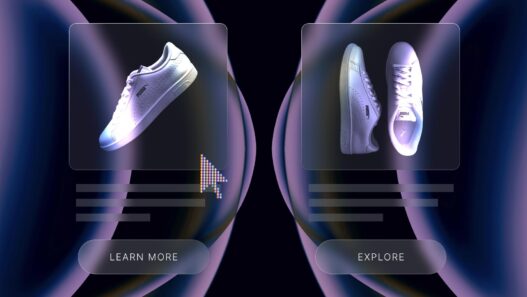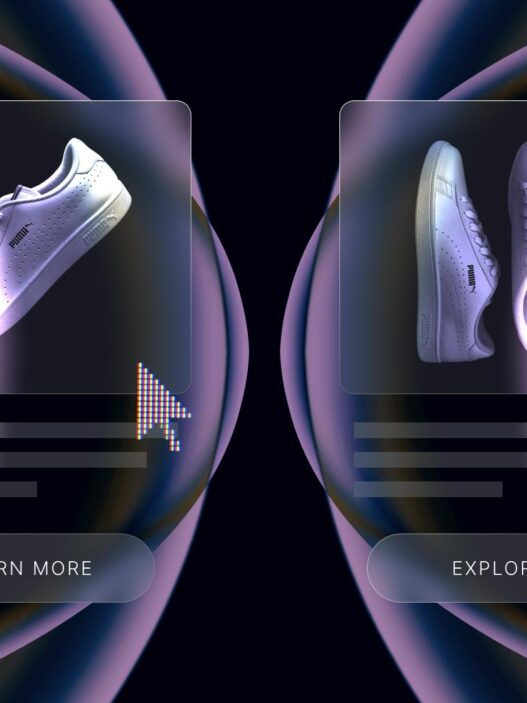Digital advertising doesn’t stay the same for long. Algorithms change, audiences shift, and performance metrics evolve quickly. Advertisers who rely on static strategies often struggle to keep up with these changes.
This article covers continuous optimization, a process used to improve advertising campaigns over time. It explains how data is collected, analyzed, and used to make small, ongoing adjustments.
Each section introduces a specific part of the optimization process, including how to measure key results, apply data-driven thinking, and use technology like AI and cross-channel attribution.
What is continuous optimization in advertising?
Continuous optimization is an ongoing process used to improve advertising performance. It involves repeatedly collecting campaign data, analyzing it, making changes, and measuring results. This cycle happens continuously, not just once.
Unlike one-time adjustments, continuous optimization is iterative and data-driven. Campaigns are updated regularly, allowing them to evolve with shifts in audience behavior, market conditions, or media performance.
The core cycle includes five steps:
- Data collection
- Analysis
- Implementation
- Measurement
- Refinement
These steps repeat, forming a loop that keeps campaigns aligned with performance goals.
Key components of continuous optimization include real-time data analysis, ongoing testing, automated adjustments, and integration across channels. This approach is often used in performance marketing, conversion optimization, and programmatic advertising, where measurable outcomes are the primary focus.
Why continuous optimization matters for measurable results
Continuous optimization improves advertising results by making small changes based on actual campaign data. This process helps advertisers adjust their strategies to match what’s working in the real world.
Campaigns that use continuous optimization often perform better than static campaigns. This approach focuses on using data to increase efficiency and reduce waste.
Some key benefits include:
- Improved campaign performance: Regular updates based on performance data make campaigns more effective over time.
- Reduced ad waste: When underperforming ads are identified and paused, that budget can be redirected to higher-performing ads.
- Enhanced targeting precision: As more data is collected, audience segments can be refined to focus on users more likely to take action.
- Adaptability to market changes: When trends shift, campaigns can respond quickly to stay relevant.
![Image: Visual representation of the optimization cycle showing improvement over time]
This data-driven approach supports ROI optimization and helps advertisers make decisions based on evidence rather than assumptions.
Key metrics and KPIs that drive performance
In advertising, metrics and KPIs (key performance indicators) measure how well a campaign is performing. Each metric provides a different view of campaign activity.
| Metric | What It Measures | Why It Matters |
| CTR | Click-through rate | Indicates ad relevance and engagement |
| CPA | Cost per acquisition | Measures cost-effectiveness |
| ROI | Return on investment | Assesses overall profitability |
| Conversion Rate | % of users taking desired action | Directly tied to campaign success |
Click-through rate (CTR) measures how often people click on an ad after seeing it. A higher CTR shows that the ad content matches what the audience is looking for.
Cost per acquisition (CPA) calculates how much it costs to gain a customer. This metric helps assess whether advertising spend is being used efficiently.
Return on investment (ROI) compares the revenue earned to the amount spent on advertising. It shows whether the campaign is generating more value than it costs.
Conversion rate tracks the percentage of users who complete a specific action, such as making a purchase or filling out a form. This directly indicates campaign effectiveness.
Some metrics, like impressions or likes, are considered “vanity metrics.” These may look good but don’t always connect to business outcomes. Performance metrics like CTR, CPA, and ROI better track whether a campaign is meeting business goals.
To track these metrics accurately, campaigns often use analytics platforms, pixel integrations, and UTM parameters.
Building a data-driven foundation
A data-driven foundation supports continuous optimization in advertising. It includes systems for collecting, storing, and analyzing data that help marketers understand what’s happening in a campaign.
The core components include:
- Centralized data storage: Using tools like customer data platforms (CDPs) that store audience and campaign data in one place.
- Clean data pipelines: Organizing data in a consistent, readable format.
- Real-time analytics: Processing incoming data quickly for live campaign adjustments.
1. Audience segmentation
Audience segmentation divides users into smaller groups based on shared characteristics:
- Demographic segmentation groups people by age, gender, or location
- Behavioral segmentation uses actions like purchase history or website activity
- Psychographic segmentation includes interests, values, or lifestyle preferences
For example, a B2B technology company might segment by company size, while an e-commerce brand might segment by purchase frequency.
Best practices include using multiple data points, reviewing segments regularly, and matching segments to campaign goals.
2. Privacy-safe data collection
Privacy-safe data collection gathers user data while following privacy requirements. Methods include:
- First-party data: Collected directly from users through forms or subscriptions
- Contextual targeting: Using the content a person is viewing to decide which ads to show
- Consent-based tracking: Only collecting data when a user gives permission
Proper consent management includes clear opt-in forms and transparent privacy policies.
3. Real-time analytics platforms
Real-time analytics platforms process data as it becomes available. Popular options include:
- Google Analytics: Widely used with flexible dashboards
- Adobe Analytics: Supports detailed segmentation
- Mixpanel: Focuses on user behavior and funnel analysis
“Real-time” means data is accessible within seconds or minutes after collection, allowing for quick campaign adjustments.
5 proven techniques to continuously optimize ads
1. Data-driven creative testing
A/B testing compares two ad versions to see which performs better. To run an effective test:
- Identify elements to test (headlines, images, call-to-action buttons)
- Create different versions
- Split your audience randomly
- Run the test long enough for valid results
- Implement the winning version
These tests often improve click-through rates or conversions by 10-30%.
2. Audience refinement and personalization
Audience refinement improves how ads are delivered through a continuous loop:
- Analyze which segments perform best
- Update targeting to focus on high-performing groups
- Adjust messaging to match each segment’s needs
- Repeat the process with new data
Personalization techniques include customized creative content, tailored offers, and segment-specific landing pages.
3. Budget allocation and reallocation
Budget allocation assigns funds to different campaigns or channels based on performance. The process typically includes:
- Weekly reviews to identify which campaigns are working best
- Shifting money from low-performing to high-performing areas
- Setting performance thresholds that trigger budget changes
For example, if search ads have a lower cost per acquisition than display ads, more budget might be moved to search campaigns.
4. Ad frequency management
Ad frequency measures how often a user sees an ad. Finding the right balance is important:
- Too few impressions: Users might not notice or remember the ad
- Too many impressions: Users may become annoyed (ad fatigue)
Common benchmarks include 3-5 views per week for e-commerce and 5-7 views per month for B2B marketing.
Strategies to manage frequency include capping views per user, rotating different creative versions, and excluding people who have already converted.
5. Cross-channel cohesion
Cross-channel cohesion keeps messaging consistent across platforms like social media, display ads, search, and email. This approach:
- Uses tracking tools like UTM parameters to follow users across channels
- Creates a logical sequence of ads (awareness → consideration → conversion)
- Maintains consistent branding and messaging throughout the customer journey
An effective campaign might start with awareness-building on social media, continue with more detailed information in display ads, and finish with specific offers in search ads or email.
Overcoming common obstacles in optimization
Continuous optimization faces several common challenges that can prevent campaigns from performing well:
| Problem | Cause | Solution |
| Data Fragmentation | Disconnected platforms | Integrate data sources, use CDPs |
| Channel Siloing | Teams not collaborating | Cross-functional meetings, shared KPIs |
| Attribution Issues | Incomplete tracking | Implement multi-touch attribution |
| Over-optimization | Too many changes at once | Prioritize changes, test incrementally |
Common errors include:
- Not testing enough: Set up regular testing schedules to gather sufficient data
- Ignoring data: Review analytics weekly to spot trends and issues early
- Not acting on insights: Assign clear responsibility for implementing changes
These obstacles appear in performance-driven environments where multiple variables interact. Addressing them requires structured processes and reliable data systems.
Integrating cross-channel attribution
Cross-channel attribution identifies which marketing touchpoints contribute to conversions. Different attribution models assign credit in different ways:
- Last-click attribution: Gives all credit to the final interaction before conversion
- First-click attribution: Assigns credit to the first interaction
- Linear attribution: Distributes credit evenly across all interactions
- Data-driven attribution: Uses historical data to assign credit based on actual contribution
AI improves attribution by analyzing large datasets and recognizing patterns that aren’t visible through manual analysis. It can detect which combinations of channels and messages lead to conversions even in complex customer journeys.
For example, AI analysis might reveal that social media ads often assist in conversions, even if they aren’t the final click before purchase. This insight helps with budget allocation and messaging strategies.
Driving sustainable growth through continuous optimization
Continuous optimization supports long-term growth by making small, steady improvements over time. These improvements create a compounding effect, where each gain builds on previous ones.
When applied consistently, this approach helps advertisers adapt to changes in audience behavior, technology, and market trends without starting from scratch. The result is a more stable and scalable advertising framework.
Even small adjustments, when made regularly, can lead to significant improvements. For example, increasing conversion rates by half a percent each month adds up across quarters and years, contributing to greater returns on advertising investments.
A privacy-safe, data-driven optimization model supports sustainable growth while maintaining transparency and compliance with industry standards. This approach delivers measurable results by aligning strategies with verified performance data rather than assumptions.
Get in touch to discuss how AUDIENCEX can drive performance for your brand.
FAQs about continuous optimization for advertising
How quickly can continuous optimization improve advertising performance?
Continuous optimization typically shows measurable changes within 2-4 weeks, with larger improvements developing over 3-6 months as the process refines targeting and creative elements through repeated adjustments.
What resources are needed to implement continuous optimization effectively?
Effective optimization requires analytics tools, team members with data analysis skills, and regular time for reviewing campaign data and applying changes based on performance insights.
How does continuous optimization work with limited advertising budgets?
With smaller budgets, continuous optimization focuses on reallocating spend from underperforming ads to better-performing ones, maximizing results by eliminating ineffective tactics based on ongoing performance analysis.
What makes AI-powered optimization different from manual optimization?
AI-powered optimization analyzes large datasets faster than humans can, identifies non-obvious patterns across multiple variables, and makes real-time adjustments based on performance trends without requiring constant manual intervention.
How can brands balance creative innovation with data-driven optimization?
Brands can set aside part of their budget for testing new creative concepts while continuing to optimize proven performers, creating a balance between innovation and reliable performance.



















